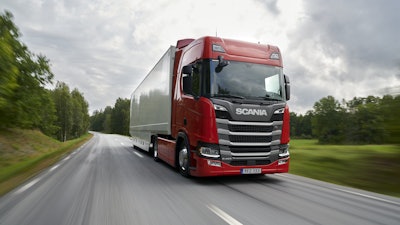
In October 2019, EU commercial vehicle registrations declined by 7.3%, following a 10.0% decrease in September.
Total new commercial vehicles
Demand fell in all segments, although the slowdown in van sales – making up more than 80% of EU commercial vehicle demand – had a major impact on the overall results for October. With the exception of Italy (+0.7%) and Spain (+0.9%), the major EU markets posted declines. Germany saw the strongest drop last month (-11.4%), followed by the UK (-9.3%) and France (-2.6%).
Ten months into the year, demand for new commercial vehicles in the European Union remained positive (+3.3%), thanks to the results of earlier months. Each of the five biggest EU markets posted gains so far this year: Germany (+8.2%), France (+5.1%), Italy (+4.4%), the United Kingdom (+3.8%) and Spain (+1.4%).
New light commercial vehicles (LCV) up to 3.5t
In October, registrations of light commercial vehicles declined by 5.8% across the European Union – the introduction of WLTP for all new vans on September 1 being the primary reason for this drop. As a result, the five major EU markets – except for Italy (+2.0%) – recorded losses last month; the United Kingdom (-11.0%) and Germany (-10.1%) in particular.
From January to October 2019, the EU market for new vans expanded by 3.4% to reach almost 1.8 million vehicles registered, despite the declines posted during the last two months. The five major markets performed well over the first ten months of the year: Germany (+8.7%), Italy (+6.4%), France (+5.2%), the United Kingdom (+3.1%) and Spain (+1.5%).
New heavy commercial vehicles (HCV) of 16t and over
Last month, EU demand for new heavy trucks decreased by 15.2%, marking the fourth consecutive month of contracting sales. With the exception of Spain (+23.2%) all major markets posted negative results in October, especially France (-19.2%), Germany (-15.4%) and Italy (-12.6%). Generally speaking, there was a strong drop in heavy truck registrations across the whole region, with 18 markets seeing double-digit declines.
So far in 2019, heavy truck registrations in the EU increased by 2.9%, notwithstanding the negative performance of the segment over the last four months. This growth was largely supported by the positive results of four key markets: the United Kingdom (+14.9%), Germany (+5.7%), France (+5.6%) and Spain (+2.6%). At the same time, demand for heavy-duty vehicles fell by 7.3% in Italy.
New medium and heavy commercial vehicles (MHCV) over 3.5t
In October, EU demand for trucks went down (-14.9%) for the fourth consecutive month, following a trend similar to the heavy-duty segment. Spain (+18.0%) was the only major market to post growth in October, as registrations fell in all other key markets last month.
Ten months into 2019, truck registrations saw year-on-year growth of 3.3% across the European Union. The United Kingdom (+12.5%), Germany (+7.6%), France (+4.6%) and Spain (+1.0%) made a positive contribution to this result, but Italy (-6.9%) performed worse than the year before.
New medium and heavy buses & coaches (MHBC) over 3.5t
Last month, registrations of buses and coaches across the EU were stable (-0.8%) compared to October 2018. The five big markets, however, posted mixed results. France saw particularly strong growth (+23.5%), followed by the UK (+3.8%) and Italy (+3.6%) with more modest figures. By contrast, both Germany (-12.3%) and Spain (-2.8%) saw demand falling in October.
From January to October, demand for new buses and coaches in the European Union remained positive (+2.5%). The Central European markets (+12.3% so far in 2019) largely contributed to this result, while in Western Europe only France (+4.2%) and Spain (+0.3%) managed to post modest growth.


















